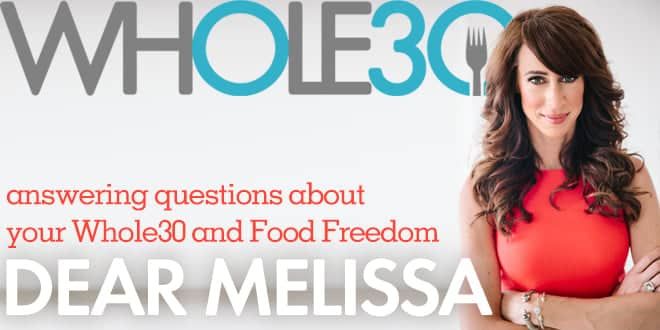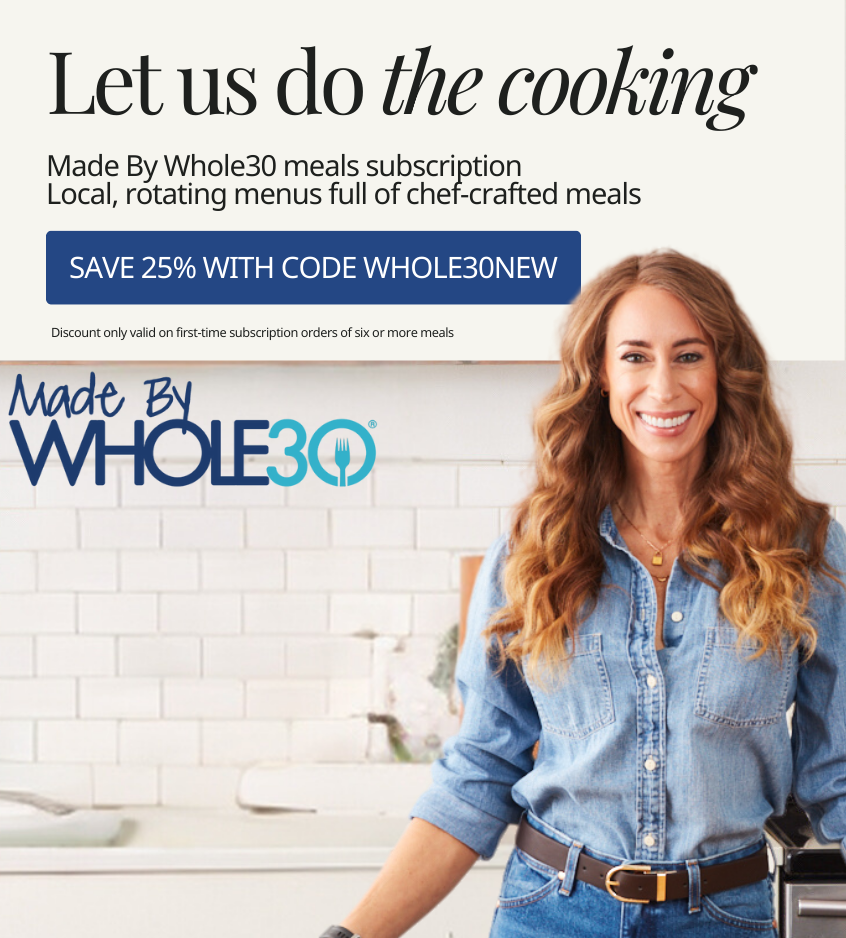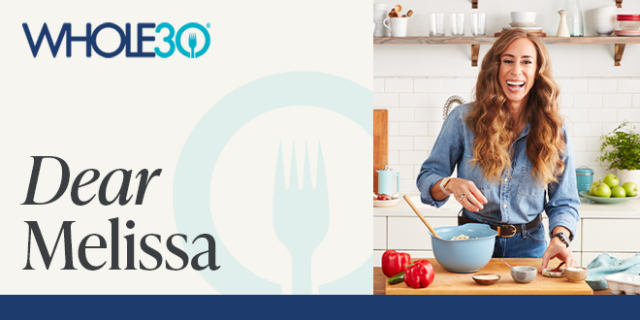This article is part of our special #Whole30AtHome resources meant to support you during the global COVID-19 pandemic. Click here to see our entire collection of resources.
Dear Melissa,
I live in the country, and I’m worried about food scarcity and availability. We’re good on meat and produce, but I don’t always have access to those little “extras.” How do we maneuver a Whole30 around sheltering in place with our food supplies disrupted? –Jennie, LA
I’m a 3-time Whole30’er, wondering how to navigate with the limitations we have right now. I live in a rural small town, and the closest thing I have to fresh groceries is Walmart. I’ve previously relied on online retailers, but they all have delayed shipping and many things are out of stock. What advice can you give to rural Americans without access to a health food store? –B., KY
Dear Whole30 Community (especially those living in rural or remote areas),
I’ve received this question DOZENS of times over the last few weeks, and have been adding to this resource as new ideas come to me. (It’s long, but worth it!) For the purposes of this article, I’m focusing on availability at your local grocery or discount stores, but if you have financial capacity, consider placing an order with Thrive Market for a few specialty goods now, so even with a potential delay in shipping, they’ll arrive for the last half of your program.
Keep Meals Simple
Don’t try making fancy recipes, or any recipe for that matter. Stick to ingredient meals: protein, veggies, healthy fats, herbs, and spices. The ingredients don’t have to “match,” because with the right cooking techniques and finishing touches, real food always tastes delicious. This gives you the freedom to pick up whatever is available at your grocery store and takes the pressure off needing 15 ingredients on hand for one meal.
My favorite ingredient meal: ground meat (chicken, turkey, beef, lamb, bison) + whatever diced, sautéed veggies you have on hand (peppers, onions, mushrooms, tomatoes, zucchini, yellow squash, spinach, artichoke, olives, you name it) + whatever sauce you have on hand. This meal tastes just as delicious with tomato sauce, hot sauce, an almond butter dressing, or a homemade Whole30 Ranch. Speaking of…
DIY…
Lest we forget, Primal Kitchen mayo didn’t always exist, and for many years, we all had to spend five whole minutes making our own mayo at home. (Uphill, both ways.) The chances of you finding Whole30 Approved mayo or salad dressings in your local grocery store may be low, but the chance of you finding eggs, olive oil, and vinegar are pretty darn good.
Gather a few recipes (we have a “Basics” chapter in every Whole30 cookbook, and a “guide to perfect mayo” on our website) and DIY. Mayo takes 5 minutes with a blender or hand mixer, and salad dressings can easily be made with fresh herbs and spices, fruit, citrus, and other easy-to-find ingredients. Whip up just 3-4 dressings and sauces at home and use them to add flavor to your ingredient meals—even Ranch dressing is easy to make at home! Bonus: They’ll keep in the fridge for at least two weeks (or for mayo-based dressings, about a week past your eggs’ expiration date).
Add Flavor With The Basics
It’s hard to find a Whole30-compatible ketchup or BBQ sauce at a local grocery store (although Walmart does carry quite a few Whole30 Approved brands), but what about salsa, hot sauce, mustard, or sauerkraut? These are all common products in any store, are pretty easy to find sugar-and sulfite-free (read all your labels), and offer easy ways to add quick flavor. You can also look for canned olives, jalapenos, or bottled capers for salt and spice.
Don’t overlook lemons and limes too! A hearty squeeze can brighten up a dish. Finally, fresh herbs to the rescue! Basil, cilantro, parsley, dill, and rosemary all add their own fast flavor to meals. I don’t even bother measuring—just dump a bunch in and call it good. (You can never add too much lemon + dill to salmon, or lemon zest + juice to asparagus.)
You May Be Surprised
You are almost certain to find a Whole30 compatible tomato sauce and paste, canned coconut milk, broth, almond flour, and even ghee at your normal grocery store. It may require that you read a lot of labels, but once you know the brands that work, you can just return to those over and over. In fact, use this opportunity to browse a few products at your local store that you might not expect to find compatible, like deli turkey, bacon, or pickles. You may just be surprised!
You can also try Googling “Whole30 shopping list [store name]” to see if other Whole30’ers have done the hard work for you. We have shopping lists floating around for Walmart, Aldi, Kroger, and many other grocery stores. Always verify what you read by checking the label in-store, but this will give you a good head-start.
Look For Canned And Frozen
I’m a huge fan of canned and frozen fruits and veggies. They’re easy to store and often available when fresh produce is out of season. Canned pineapple adds flavor to salmon, burgers, or chicken; canned sweet potato + canned salmon are the basics for our No-Fuss Salmon Cakes, frozen peas are easy to toss into anything (peas are now compatible!) and frozen berries can be mixed into a light vinaigrette. And don’t forget frozen cauliflower rice! You can find these in just about every freezer section, and they’re both cost-effective and way easier to prepare than trying to rice your own.
You can also score big for your budget with frozen meat. Look for frozen wild-caught salmon, cod, shrimp, ground beef, and more. Plus, poke around for a Whole30 Approved frozen meal from Walmart or Grandcestors, or meat patties from Tribali, Applegate, or Teton Waters Ranch. (You never know!)
Phone A Farmer
Many farmers are selling direct-to-consumer now, as most of the spring and summer farmers’ markets are closed. Check with your local farmers market association, search for a local CSA, or call your local co-op for resources. You may be able to find local, seasonal produce straight from the source, bypassing the grocery store altogether.
Do Your Best
One last and final word in this unique Whole30 at Home… do your best. If that means eating microwaved compatible hot dogs and leftover sweet potatoes three nights in a row, OKAY. If it means squeezing mustard on everything until your Thrive Market order comes in, squeeze on. If you can’t find beef, but have plenty of chicken, our recipes hub can give you plenty of inspiration. This isn’t about doing the perfect Whole30 (it never is), but about keeping your promise to yourself, letting good enough be good enough, and feeling proud of yourself just for being here, because I sure am.
XO Melissa

















